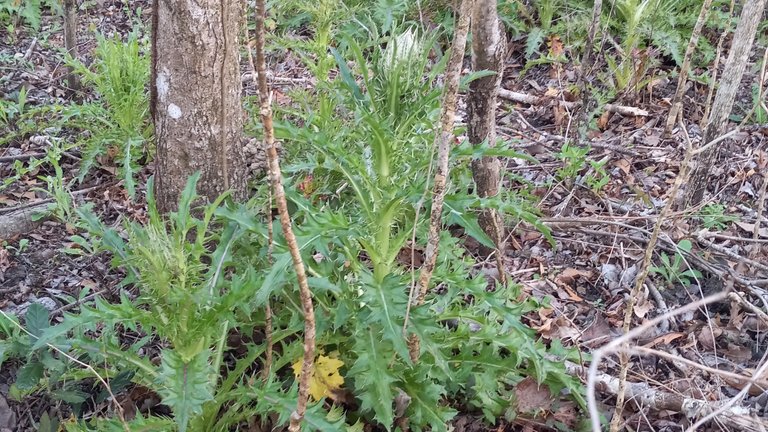
This year my wife and I opted to move into a van and travel across the country in search of a place to homestead on. As part of our ongoing efforts to re-wild ourselves and our diets, we’re striving to learn more about foraging and eating native, wild plants. Yesterday, we ate thistle for the first time.
I Know NOTHING About Eating Thistles
We grew up in rural Western New York, and have spent most of our adult lives living in the desert of Southern Arizona. We had thistles where we grew up in New York, and I recall them growing in the woods sometime around late spring and summer. I don’t recall seeing them at all in Arizona.
In New York I don’t recall them being considered much more than troublesome weeds.
It turns out there are many different species of thistle, with many uses. Some have enzymes that are used in cheese making. Pretty neat.
Just a little bit of time spent on the internet, and now I know a little bit more than nothing. Cool beans!
In Season In Our Current Location
Right now, we’re spending time in Southern Louisiana. While it’s still early March, it feels like springtime. The temperatures are warming up, and plants are popping up all over the place, including thistles.
Some of the thistles we’ve seen are already 5 feet tall or more. But there are plenty of smaller ones still, and those are the ones you want to eat.

This is what you want to look for. About knee high or shorter and the flower hasn't bloomed yet.
Easy To Prepare And Eat
In Louisiana, they’re called “chadrons”. The stalks of the smaller ones, before the flower really starts to form, are tender enough to eat. Taller ones are a bit more woody and not great for eating.
The tender stalks taste a bit like celery, maybe a little sweeter. The common way to eat them is to marinate them in vinegar for 10-15 minutes and season them with salt and pepper or other spices.
We didn’t have vinegar, so we just tossed them in some hot sauce to give them some kind of flavor. They were good.
Not only were they tasty, but in line with our ethics of freeing ourselves from fragile, capitalist supply chains for our food, they were free and abundant. I believe everyone should have free access to abundant, healthy, natural food and ethical foraging is part of that.
Easy and Abundant To Find

Nearly all of the green in the underbrush is thistle!
To harvest the chadron, cut off the spiny leaves. You’ll be left with the stalk and the bud. Cut off the bud, and harvest the stalk.
Once you’ve harvested the stalk, use a small knife to peel it, cutting away the fibrous parts. Then just slice the tube shaped stalk.
Rinse, and serve in the manner I mentioned above, and enjoy.
I’m still at the beginning of this journey of re-wilding and one of the infuriating parts of it is when I learn of a plant like this that I’ve always been taught to look at as a weed and find out that it is in fact an abundant and nutritious source of food. It feels like you’ve been bamboozled your whole life.
Right now with the cost of food increasing so fast, and the negative environmental impacts of industrial farming, it is a moral imperative to learn how to ethically and locally source your food as much as possible. For some folks that may mean shopping more at local farm stands, for others it may mean hunting and foraging, and for others it may mean growing what you can (even if that’s one rosemary plant in a pot on your porch.)
For now, living nomadically and changing locations so quickly, it isn’t possible to source all of our food outside of typical supply chains, but doing what we can when we can will help us to learn what we need to in order to meet that goal once we start homesteading.
Do you have any unexpected foods that are forageable where you live? I’d love to hear all about it.
Quick disclaimer! Like I said earlier, I'm just learning these things myself right now. Always check with a knowledgeable source in your own area before eating wild plants. Don't just listen to some schmuck like me on the internet!
